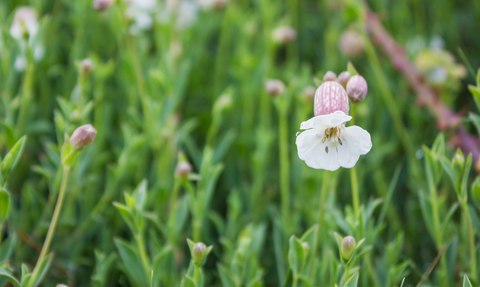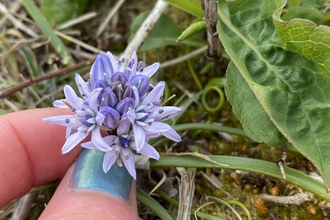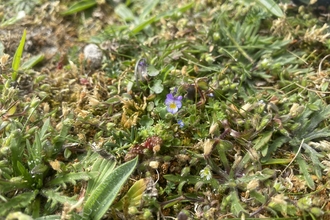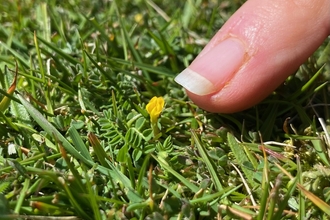
How to hunt for wildflowers on Scilly
Enjoy Scilly's rare and beautiful island flora
Due to mild weather and its sub-tropical climate, Scilly has a wealth of rare and beautiful wildflowers, many of which grow only on the islands (in the UK). Open, grassy fields are a great place to start when looking for flowers, as overgrown grass can offer an array of colourful plants and buzzing wildlife, but also check heathlands, beaches and woodland areas.
Many of Scilly’s rarest species are found battling the elements on the wild and windy coastline, such as the elusive least adder’s-tongue fern and the striking spring squill. Nestled on the windswept rises of Gweal Hill on Bryher and Toll’s Hill on St Mary’s, the spring squill is a great flower to look for, as it is both tiny and charming. A must see for wildflower enthusiasts. The least adder’s-tongue, equally as small, is an even rarer must-see as it currently only grows on Wingletang Down, St Agnes. The best time of year to see the least adder’s-tongue fern is between autumn to early spring, whereas the spring squill can be seen during spring (April to May).
Very in-character for the islands, another rare species of flower is the small and colourful dwarf pansy, which can be found growing on the sandy dunes near Rushy Bay. This vulnerable flower is a splash of vibrant violet amidst the stormy shores of southern Bryher. The dwarf pansy grows nowhere else in the UK, so finding them is extremely special and exciting. Historically the flower has also be spotted growing on the uninhabited island of Teän, most recently being recorded in 2021. Another miniscule Scilly speciality is the orange bird's-foot, which can be spotted by eagle-eyed observers growing on places like Heathy Hill, Bryher and around the Daymark, St Martin's. Like the spring squill, the best time of year to see the dwarf pansy and the orange bird's-foot is spring (March to May).
Bulb fields are a great location for flower spotting, as the arable, overgrown fields are often a magnet for interesting plant life, such as the small-flowered catch fly. Scilly hosts a wide variety of rare plants that thrive on its blustery coastlines, weathered heathlands, and patches of disturbed, sandy soil. In the spring, sea thrift abounds on the coastal heathlands. You can also enjoy plants that aren't so rare but that look very beautiful, including carpets of bluebells, ragged robin (in Rosehill Nature Garden), sea campion, and more. Foxgloves, sheep’s-bit, wild chamomile, rock sea-spurrey, heather and bird’s-foot-trefoil are all present in the summer. In early spring, the naughty-but-nice three-cornered leek (invasive) abounds in every lane. Narcissi and daffodil have escaped the bulb fields to pop out of the ground.
Wetland species are thriving on Scilly, too, in large as a result of our practical management. Bog pimpernel (locally rare) has returned to Higher Moors SSSI after 68 years of absence, bog stitchwort (locally rare) has returned to Higher Moors SSSI after 18 years of absence and tubular water dropwort (vulnerable & rapidly declining in the UK) increased by over 2000% in 2020. There are also three species of orchid present on Scilly, including the pyramidal orchid (which abounds in the summer on Samson), southern marsh orchid (which might be spotted in Lower Moors, St Mary's) and autumn lady's-tresses, which can be spotted by close observers on the Garrison and Harry's Walls (St Mary's).
It is important to be respectful when searching for rare flowers. Use magnifying glasses, binoculars, and take plenty of photos, but refrain from picking the specimens for closer inspection. Using your eyes is the best way to interact with and appreciate Scilly’s fauna. Be careful not to trample or squash the flowers underfoot.
Find out more
Find out more about Scilly's amazing fauna below.



